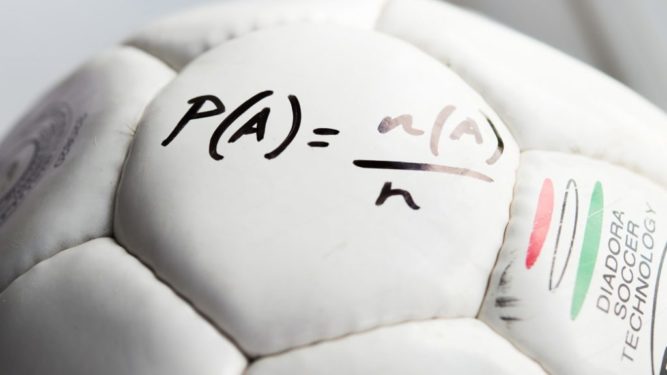Important Information for IB Mathematics Students:
Please remember, it is the student’s responsibility to ensure their investigation meets all the IB IA assessment criteria. Personal engagement matters, so be sure to choose a topic that resonates with you personally.
Each of the below titles link to sites, documents or videos that give a little information about possible investigations or maths that might be involved in your project. It is up to you (and your teacher) to make sure the level of maths in your IA is appropriate. Don’t think you need to explore maths outside of your syllabus in order to obtain a good mark. Something you properly understand, apply in an interesting way and can communicate clearly with enthusiasm is preferred. Most of all, listen to advice from your teachers, and enjoy your mathematical explorations!
Maths IA Title Ideas
Robot vacuum cleaner
How should a robotic vacuum cleaner move in order to best clean a room of unknown shape and dimensions? Explore geometric solutions and consider the use of random numbers to design your own automatic cleaner.
Starling murmuration
Model the flight of starlings. How is it that thousands of birds can fly and act together without breaking up into a mass of flapping chaos? Some say it’s maths.
Staying dry in the rain
What will keep you drier in the rain, running or walking? Walking, you stay in the rain longer but running, you hit faster rain. Does it make a difference to how wet you get?
Spherical triangles
Explore the Reuleaux triangle. It has some amazing properties, for example it has the least area and the sharpest corner possible for a shape of constant width.
Parking problems
Examine the probability distribution of distances between parked cars to explore the mathematics of parking.
How many hairs does the average cat have?
Or what’s the probability of two cats having the same number of hairs? Estimation is an important topic in mathematics. Be sure to consider where the major unknowns lie.
Refuse collection
Modelling waste collection. Investigate how to solve a problem involving waste-collection route mapping. Apply it to your local area.
Kinematics of rugby
What is the optimum projection angle for attaining the maximum distance in a rugby place kick? A fun study of projectile motion.
Irrigation matters
Use parametric equations to explore the best way to irrigate a farmer’s field. Your circular sprinklers could move across the field on tracks.
Pascal’s triangle
Pascal’s triangle is full of interesting patterns but be sure to explore how these patterns can be applied to solving other problems in maths.
Rational approximations to irrational numbers
Which are the best ones, and can you compare the values of rational and irrational numbers?
Beautiful maths, the golden ratio
Does the golden ratio really have anything to do with beauty? Is it myth or maths? Collect and analyse your own data to test people’s perceptions.
Traffic flow
Explore models related to different aspects of traffic flow in your local area. Do you think the lights stay red for too long? Predict what would happen if you changed it.
Origami and hexaflexagons
Flexagons are paper shapes that can be folded to reveal hidden faces. To do a mathematical investigation learn how to ‘flex’ the flexagon first.
Minimising surface area
Minimise the surface area to contain a particular volume of drink. Investigate cylindrical or cuboid containers using calculus. How much money could your drinks company save in packaging?
Stacking spheres
It’s a deceptively simple question: What arrangement allows you to fit the most spheres into a limited volume?
Measuring coastlines
The coastline paradox is the counter-intuitive idea that coast lines do not have a well-defined length. It depends on the length of you ruler and a coastline is an example of a fractal.
Spirographs
See what happens when circles rotate in circles. This well-known toy has been around since the 1960s but it’s also an interesting mathematical gadget, in which your spirals always end up back in the same place.
Bad maths in court
Investigate miscarriages of justice in which people have been convicted of serious crimes based on evidence given by mathematical error.
Body proportions
Does finger length really predict mathematical ability? And is forearm length a good predictor of shoe size?
Volume of an egg
Explore oval shapes using integration and volumes of revolution.
Modelling music
Modelling musical chords. Can music be broken down into purely mathematical models?
Different number systems
Learn how to do calculations using bases other than 10, for example, binary. And explore real-life uses of different number systems?
Shopping times
Are you fed up with long queues at the shops? Use a Poisson distribution to model peak shopping times in your local supermarket.
Normal distribution
Collect some data (birthweights, shoe size, IQ) and test the hypothesis that your data were sampled from a Normal (Gaussian) distribution.
Code breaking
Enter the secret world of codes and ciphers. Unravel the mysteries behind breaking codes. Then create your own code and challenge others to crack it.
Statistical analysis of languages
Examine word length or number of words in a sentence. Can you predict the language of an excerpt based on these observations alone.
Petrol prices
Investigate the cost-of-living crisis. Is it worth the trip to drive to a cheaper petrol station?
Trapezium rule
Find some data that produces a curved speed-time graph, such as a plane taking off or a racehorse, and use the trapezium rule to calculate distance. Do a suitable regression to model your curve and compare results obtained by integration.
Voronoi diagrams
Voronoi diagrams have applications in almost all areas of science and engineering. They are used to delineate regions around individual data points by using polygonal boundaries. Explore their use in animation or figure out the best place to build a new school in your city.
Different people
What impacts opinions more, gender or nationality? Collect your own data and do a Chi-squared test to find out. See if your results match up to wider studies.
Photography
Investigate the relationship between the aperture of a camera and a geometric sequence.
Geometric proofs
Satisfying proofs that can be demonstrated visually and so are accessible to all. Investigate the distribution of people who can understand your proofs compared to algebraic methods.
Distance to stars
Ever wondered how scientists work out how far away objects in space are? How accurate are the results? And will we ever know for sure?
Radioactive decay
If there was a nuclear accident at your nearest nuclear power plant. After how long would it be safe to go outside?
Memory
Explore and compare strategies to help struggling math students to enhance their working memory.
Mandelbrot sets
Find out about complex numbers while investigating snowflakes.
Climate change
How do climate models work and why is climate modelling so difficult?
Sea waves
Explore the mathematics of ocean waves and surfing. What causes water waves and what influences how big they’ll be?
Optimising volume
What are the best dimensions for shelves or boxes to store your important items.
Counting beans
You’ve seen the fairground game in which you must guess the number of sweets in a jar to win the cash pot. How close are your estimates? Is there more than one way to solve the problem?
Modelling zombie spread
Do Zombies move about randomly, bumping into each other? Use mathematical modelling to predict how long humans could survive a zombie apocalypse.
Plotting planets
Investigate circular motion. How well does your model predict the motion of our planets?
Voting systems
Investigate voting systems around the world. Can you create a fairer election system?
Explore the mathematics of risk
Could running late be more dangerous than drunk driving? And how well can we predict catastrophic events that have a low probability of occurring?
Tower of Hanoi puzzle
Do you enjoy mathematical puzzles? How you could work out the number of moves needed to solve a Tower of Hanoi puzzle with a certain number of discs.
Monty Hall Problem
The Monty Hall problem is a probability puzzle. It’s a famous paradox that has a solution that is so absurd, most people refuse to believe it’s true. Test your explanation against the public. Will they believe you?
Achilles and the tortoise
In a race, the quick runner Achilles can never overtake the slow tortoise because no matter how quickly Achilles closes each gap, the tortoise will always open new, smaller ones and remain just ahead of the Greek hero. This should get you puzzling about the nature of infinity.
Timetables
Explore matters of scheduling. Fed up with triple maths on a Monday? Can you do a better job with your school’s timetable?
Tangrams
Explore the countless different shapes that can be created using the seven Tangram tiles produced by dissecting squares.
Population study
Is the world population set to explode or is the human population really on the brink of collapse. Explore fertility policies and choices, and their potential impact on human population.

